Local SEO vs. Traditional SEO are two distinct approaches to search engine optimization, each targeting a different audience.
Imagine you live in Los Angeles and urgently need a plumbing service because of leaky pipes. You search online for plumbers, aiming to find a contractor who offers high-quality services at a reasonable price and has excellent reviews.
Everything seems perfect—except the company is based in New York. Despite being highly rated and relevant, they can’t help you because they don’t operate in your area. In this case, what you truly need is a local plumber in Los Angeles, ideally one near your neighborhood.
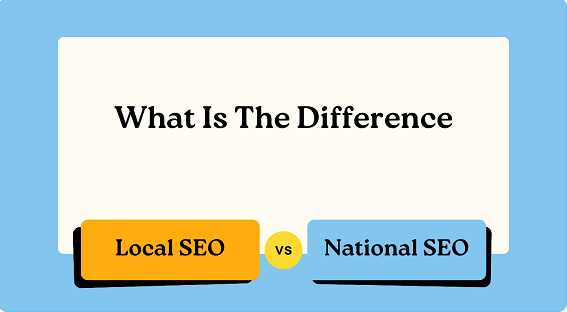
Now consider another scenario: you’re involved in a car accident while driving through Nevada, but you live in California. The accident resulted in injuries, and you need legal representation to seek compensation.
Here’s the issue: Nevada and California have different laws regarding liability, insurance claims, and compensation limits for personal injury cases. An attorney based in California might not be familiar with Nevada’s specific legal nuances, which could negatively impact your case.
All states have different laws for who can carry hidden, loaded guns in public.
It’s alarming how much variation there is pic.twitter.com/Jdy2HA9AbK
— Everytown (@Everytown) July 7, 2017
In this situation, hiring an experienced personal injury attorney who specializes in Nevada law is important
These examples show why Local SEO and National SEO are so different.
What is Local SEO?
Local SEO helps businesses show up in searches when people are looking for services in a specific area, like your neighborhood or city.
On the other hand, National (traditionl) SEO focuses on reaching a broader audience across the entire country—and even internationally.
Because these two approaches are so different, they require unique strategies, techniques, and tools to be effective. Let’s dive deeper and reveal what’s beneath the surface.

Local SEO vs. Traditional SEO: Keyword Differences
Keywords, keywords, keywords: they’re one of the most important elements for both local and national SEO strategies. Keywords guide our actions, shape our tactics, and serve as powerful tools to maximize a business’s ROI.
Simply put, keywords are the search terms people use to find services, products, or information online.
Let’s start with local keywords. Referring back to our examples, some local keywords might include:
- “plumbing services in Los Angeles”
- “plumbers near me”
- “Las Vegas plumbers”
- “personal injury lawyers in Nevada”
- “best personal injury attorneys in Los Angeles”

What do these have in common? They all include a local element—whether it’s a city name, state name, or terms like “near me.”
Local keywords often follow these patterns:
- [service/product + city name]
- [service/product + state name + city name]
- [service/product near me]
- [city name + service/product]
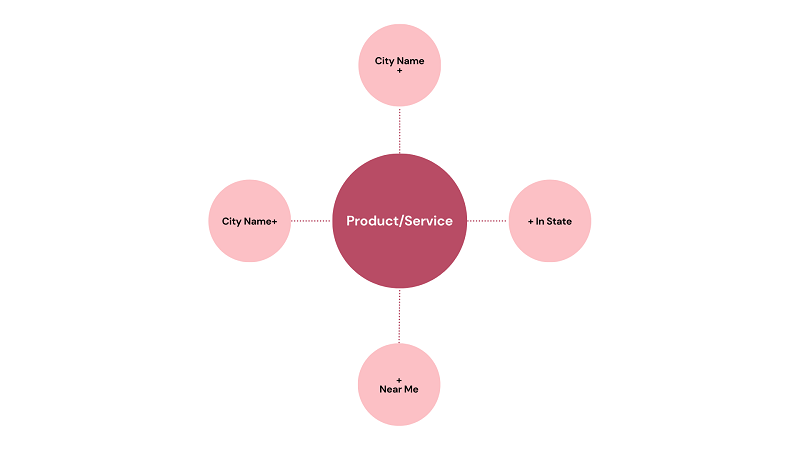
On the other hand, general or national keywords usually don’t include location-specific terms like city names, state names, or “near me.”
For example, if you’re looking for effective HR software, you probably won’t search using local terms because SaaS products are accessible online.
Instead, you’d use broader keywords like “best HR software” or “affordable HR software.”
Local Keyword Volume vs General Keyword Volume
When talking about keyword volumes, it’s important to note that location-based keywords usually have much lower search volumes compared to general ones. But that doesn’t make them any less valuable.
In fact, for local businesses, these keywords can be even more critical—and harder to rank for.
- The keyword “Portland personal injury attorney” has a search volume of 350 and a difficulty score of 63 (hard).
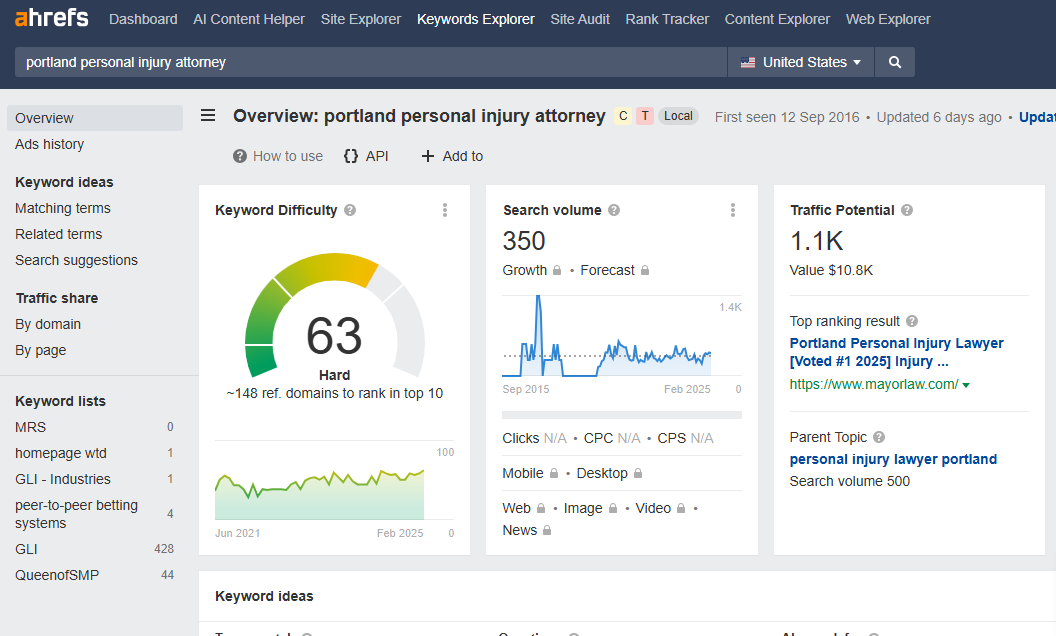
- Meanwhile, a non-local keyword like “digital marketing services for small business” has a global search volume of 1,300 and a difficulty score of 22 (medium).
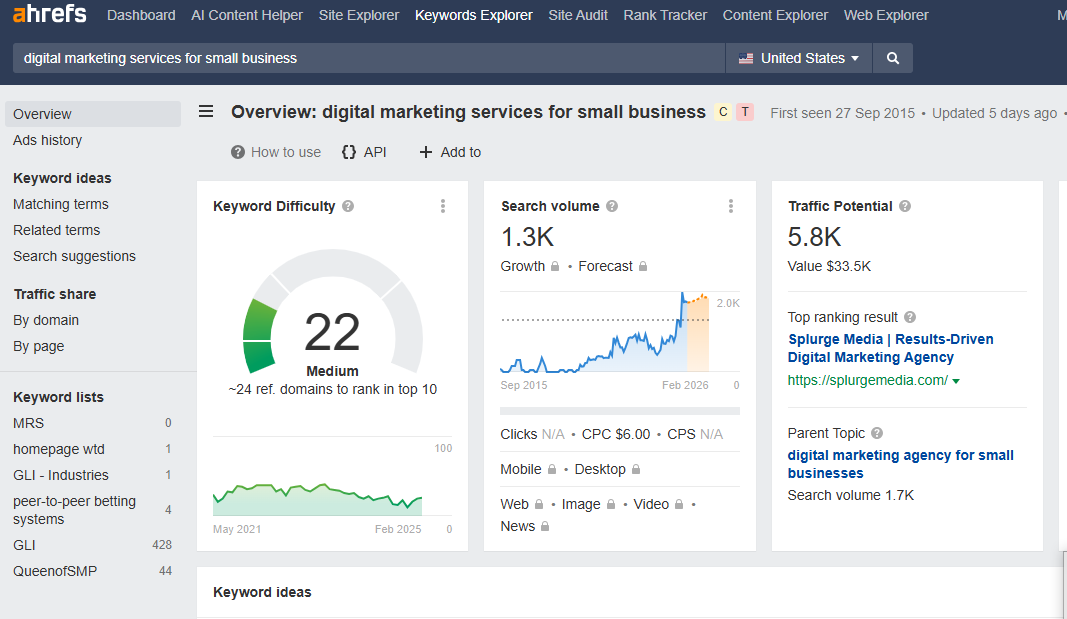
While a volume of 1,000+ might be considered mid-level for general keywords, a local keyword with a volume of 350 can be incredibly valuable.
Why Are Local Keywords Often Harder To Rank For?
- High Competition: Even in smaller geographic areas, competition can be fierce. Many established businesses are already optimized for these keywords, making it tough for newcomers to break through.
- Natural Keyword Integration: From an SEO perspective, it’s often challenging—or even impossible—to use local keywords naturally in content, both on-site and off-site. This is a significant factor in ranking difficulty. To rank well, we need to incorporate primary keywords, exact matches, and variations into service pages, blog posts, and guest posts.
- Keywords containing “near me” can sound unnatural in content, especially in guest posts. That’s why variations like “near you” or more contextual phrasing are often used instead.
You might come across sentences like: “Looking for a bakery near you? We’re here to serve the best cookies in town,” or “If you need a reliable landscaping company near you, we offer top-notch services at competitive prices.”
On the other hand, global keywords like “digital marketing services” or “online language classes” are far easier to integrate naturally into content. They offer more flexibility for variations while maintaining relevance.
- Keywords containing “near me” can sound unnatural in content, especially in guest posts. That’s why variations like “near you” or more contextual phrasing are often used instead.
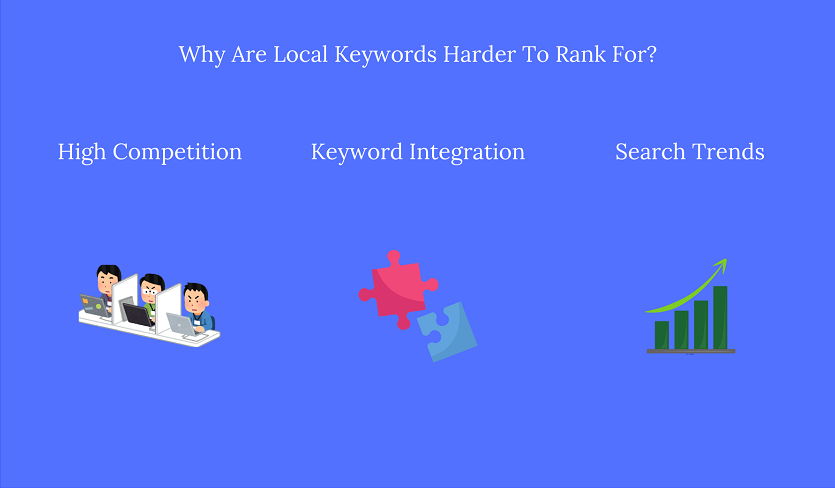
- Search Trends and Seasonality: Local keywords can have seasonal or event-based spikes. For example, searches for “pool cleaning services in Miami” may peak during summer, while “heating repair services in Chicago” might rise during winter.
- Often, we see significant fluctuations rather than stability in local keyword volumes. These variations are influenced by weather changes, local events, holidays, and regional trends.
As a result, businesses need to monitor these shifts carefully and adjust their SEO strategies to align with seasonal demands.
- Often, we see significant fluctuations rather than stability in local keyword volumes. These variations are influenced by weather changes, local events, holidays, and regional trends.
Google Business Profile Optimization
When discussing local and national businesses, we can’t overlook Google Business Profile (GBP) optimization.
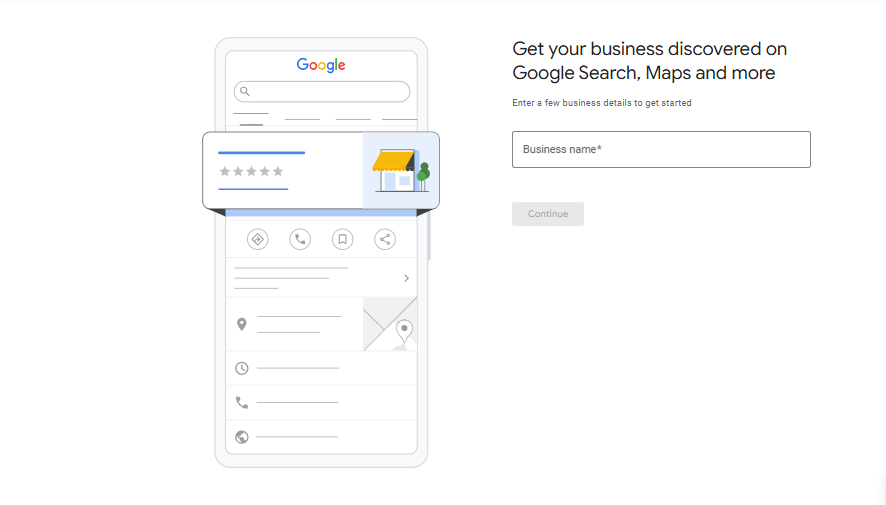
Is having a GBP profile important? For many local businesses, it can be even more critical than having a website. Well-optimized GBP profiles can drive direct calls, messages, and conversions, making them highly competitive in local search results.
Optimizing your GBP profile can really make a difference.
But my top strategies are:
1. EMD
2. Proper category, find with Plepper extensions
3. Location + City in the title
4. Socials
5. Citations
6. GBP posts 5x day
7. Add Products and services if they are available
8. CTR…— Michal Barus | DTC SEO (@webjuice_ie) November 15, 2024
To stand out and have a chance to appear in the Local Pack, your GBP profile must be verified, and all business information should be carefully filled in.
- Business Description: Use this section wisely by incorporating your local keywords (city names, state names, and phrases like “near you”) naturally. Highlight your strengths, but avoid using false information.

- Products Section: If you offer products, fill out this section thoroughly. Include product names, specifications, prices, and high-quality images. These will be visible to viewers and can directly influence purchase decisions.
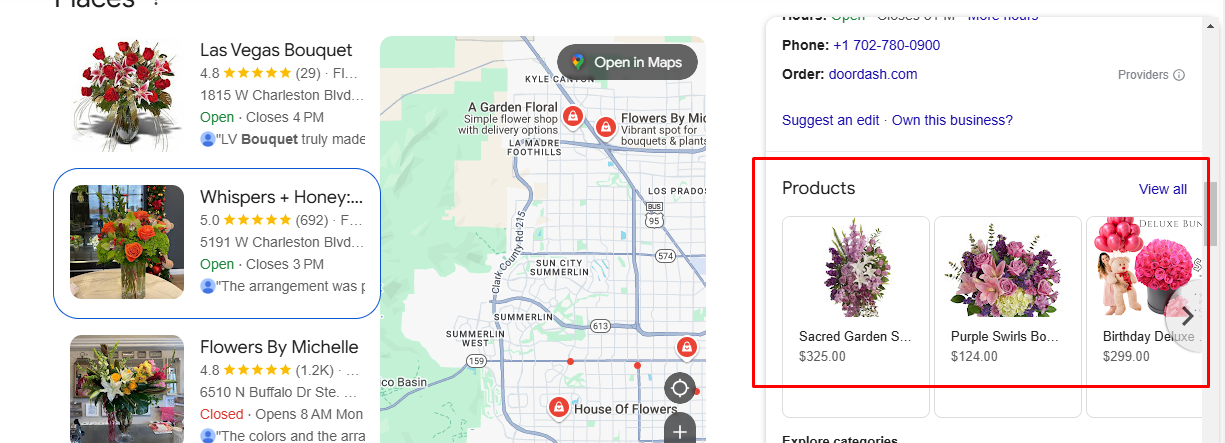
- Services Section: If you provide services, ensure this section is filled out with relevant details. While these entries may not be directly visible to viewers, they give Google a better understanding of your business, which helps in ranking.
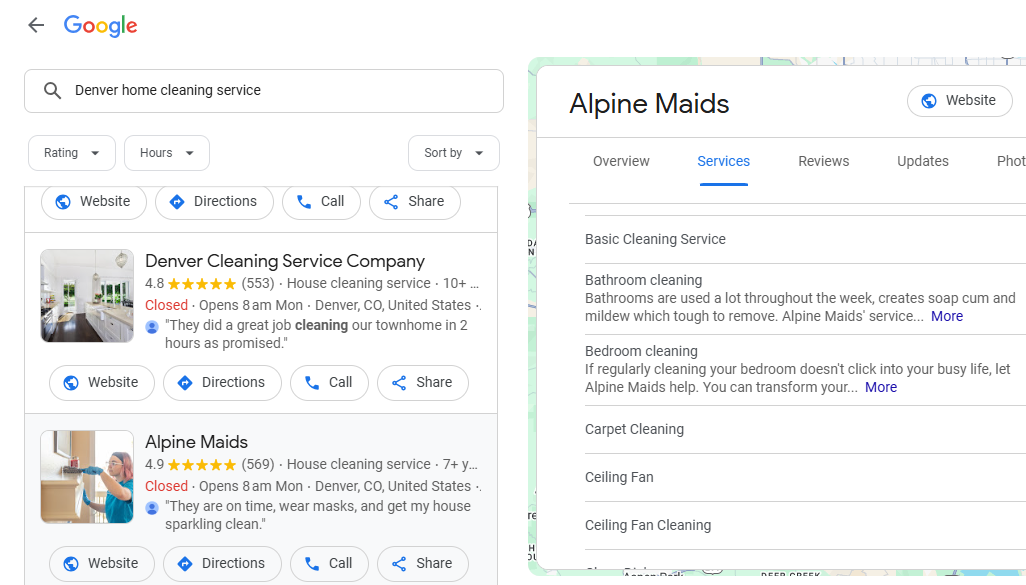
- Categories: Carefully select your primary and secondary categories. If you’re unsure, research competitors in your industry and see what categories they’ve chosen.

- Example: If you own a bakery in New York, your primary category might be “Bakery,” while secondary categories could include “Cake Shop” or “Pastry Shop.”
- NAP Signals (Name, Address, Phone Number): Ensure your business name, address, and phone number are accurate and match what’s listed on your website.
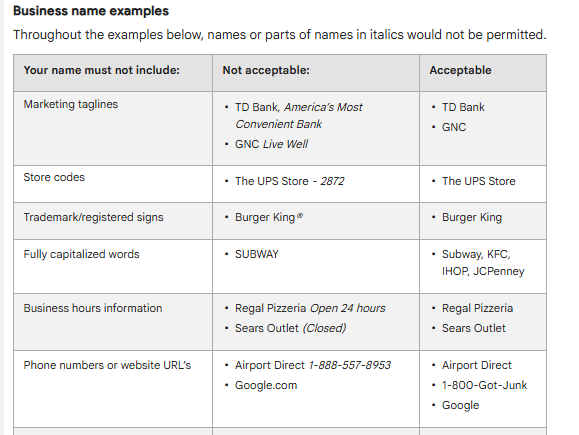
- Avoid violating guidelines by adding location-based keywords to your business name (e.g., “Company Name in Las Vegas”). Such practices often result in profile suspension. (Consider the risk)
GBP is a powerful tool, but it requires consistent attention and updates. The ultimate goal is to appear in the top 3 results of the Local Pack. If you’re ranked 4th or 14th, the difference is negligible because most users won’t scroll that far. Make the most of your profile to gain a competitive edge and secure your spot at the top of local search results.
Maximizing Your Visibility in Google’s Evolving Local Search Landscape
📌 The New Local Search Reality
– Did You Know? Businesses in Google’s local 3-pack get 126% more traffic than those ranked 4th to 10th. The top position alone attracts 17.8% of clicks!
– Game-Changer… https://t.co/0HhynT6Hdw
— HK Motte (@kman62) December 7, 2024
Online Directories and Citations
When it comes to Local SEO, online directories and citations play an essential role in building trust and credibility with search engines. Unlike traditional link-building strategies aimed at driving referral traffic, the primary goal of citations is to provide Google with consistent and accurate signals about your business’s existence, location, and legitimacy.
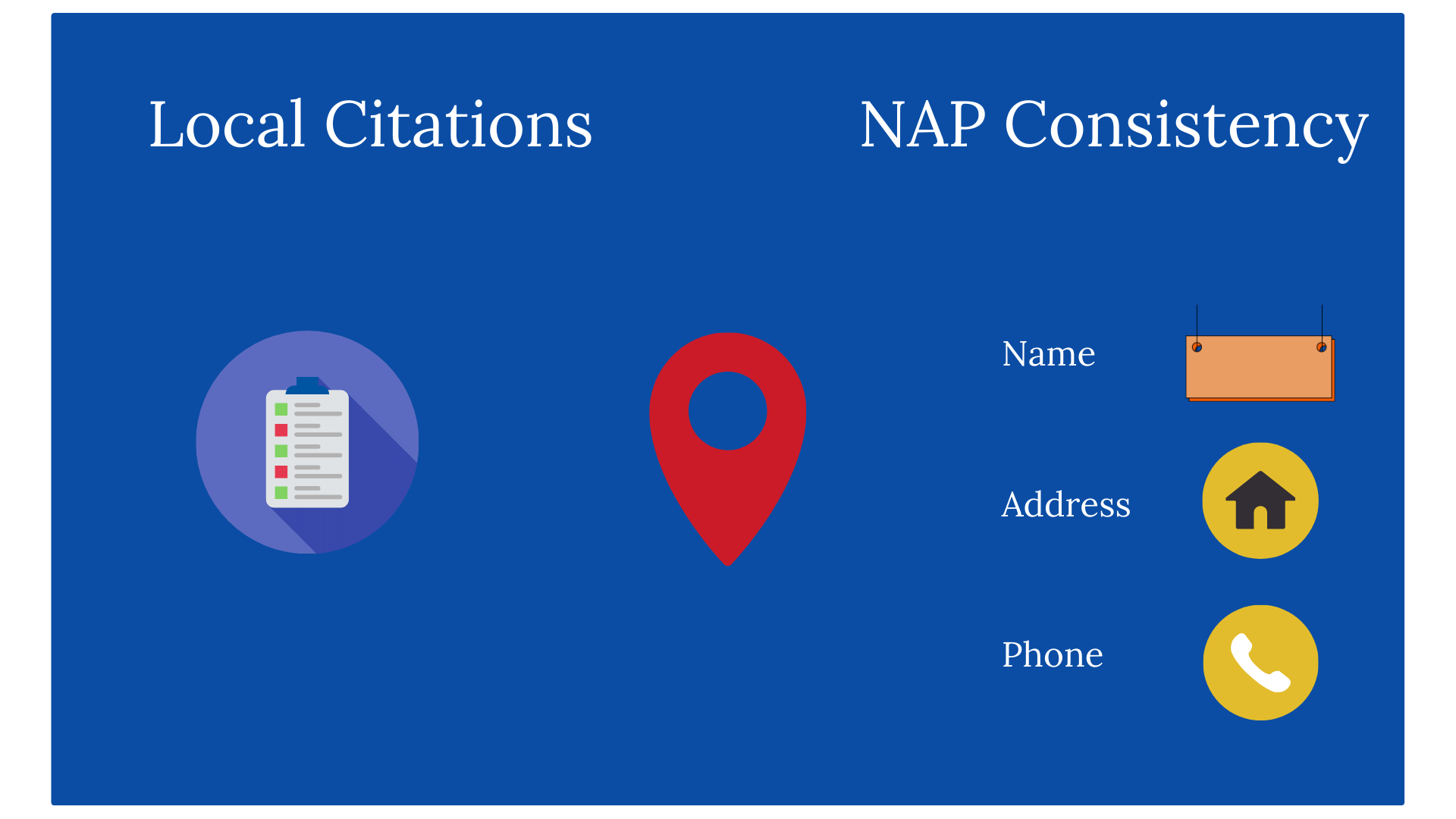
Why NAP Consistency is Important?
Online citations are mentions of your business name, address, and phone number (NAP) across different online directories, websites, and platforms. These signals help search engines verify that your business is real, operational, and located at the specified address. For local businesses, citations and NAP signals are one of the key ranking factors for appearing in local search results and the Google Local Pack.
NAP means Name, Address, and Phone number. It’s the basic details about a business that you find in online lists.
Did you know it’s important for local SEO? Learn all aboout it:https://t.co/D8NdO1XWAW. pic.twitter.com/WhVUbQIkfg
— Semrush (@semrush) March 31, 2024
Accuracy and Consistency of NAP Information
Ensure your Name, Address, and Phone Number (NAP) details are consistent across your website, Google Business Profile, and all directories. Any discrepancies in your NAP details across directories can confuse search engines and negatively affect your local search rankings.
If your business moves locations, changes its name, or updates its phone number, it’s important to update this information across all registered directories and platforms.
Quantity and Quality of Citations
While citations from high-authority directories hold more weight, even low-traffic or low-domain authority directories are valuable for Local SEO. The goal is not link-building but providing Google with multiple validation points about your business’s location and legitimacy. There are some key online directories for local businesses:
- Google Business Profile (GBP)
- Yelp
- Yellow Pages
- Bing Places
- Facebook Business Page
- TripAdvisor (for hospitality and tourism businesses)

Beyond these well-known platforms, location-specific and niche-specific directories (e.g., regional chambers of commerce websites, local blogs, and trade association directories) can also be highly valuable.
Off-site SEO Strategies for Local Businesses
When talking about off-site SEO, the first thing that comes to mind is link building. Just like in general SEO, link building plays a vital role in local SEO as well. However, area-specific businesses face unique challenges, such as naturally integrating local keywords into anchor texts and finding high-quality, niche-specific websites within their region.
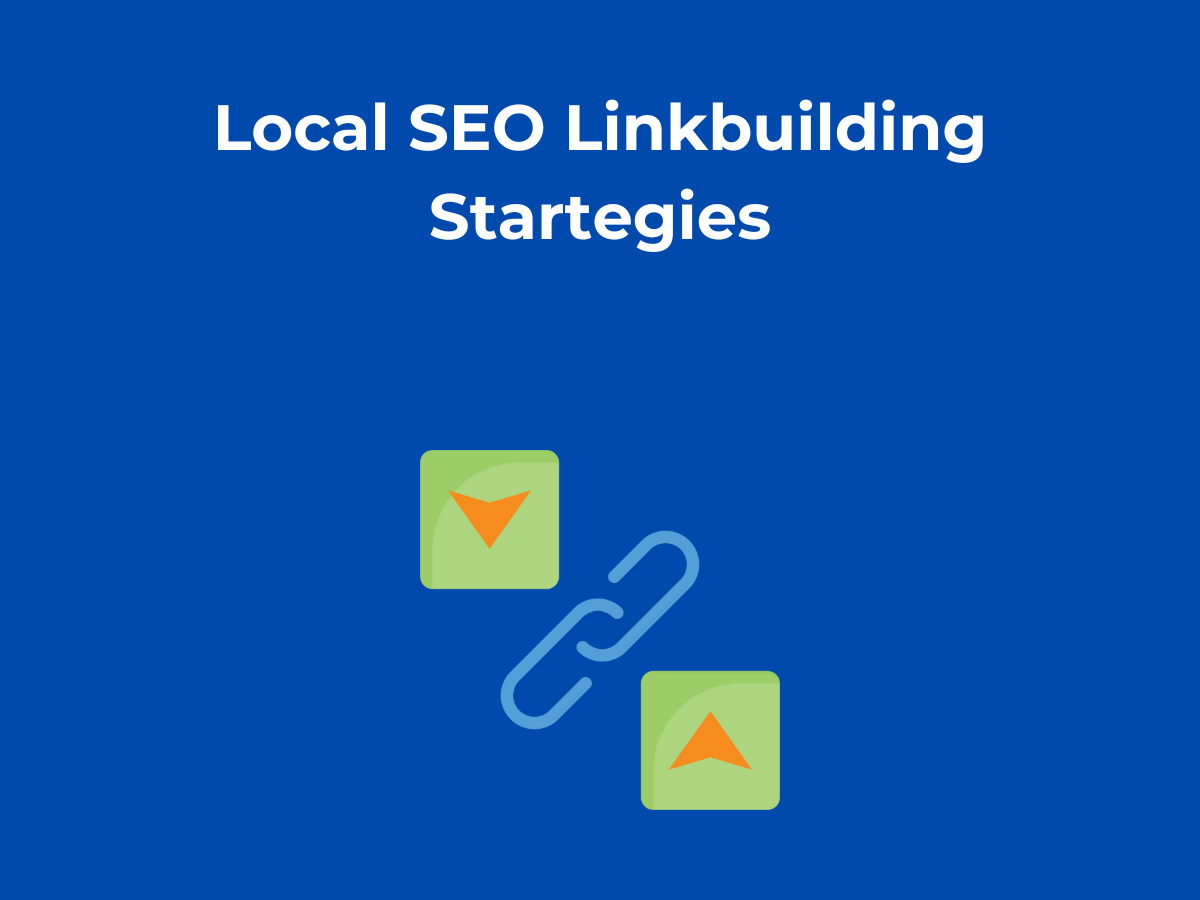
Balancing Local and Non-Local Backlinks
While local backlinks are incredibly valuable, it’s important not to limit your efforts solely to area-specific websites. A well-rounded and natural backlink profile should include both local and non-local links. A good ratio to aim for is approximately 60% local and 40% global backlinks.
- Local Backlinks: These are highly valuable for improving local search relevance and authority.
- Non-Local Backlinks: These can still offer significant value if they come from authoritative and relevant sources. Avoid spammy websites, as they can harm your SEO profile. Instead, focus on building a diverse and authentic backlink profile.
Challenges and Considerations
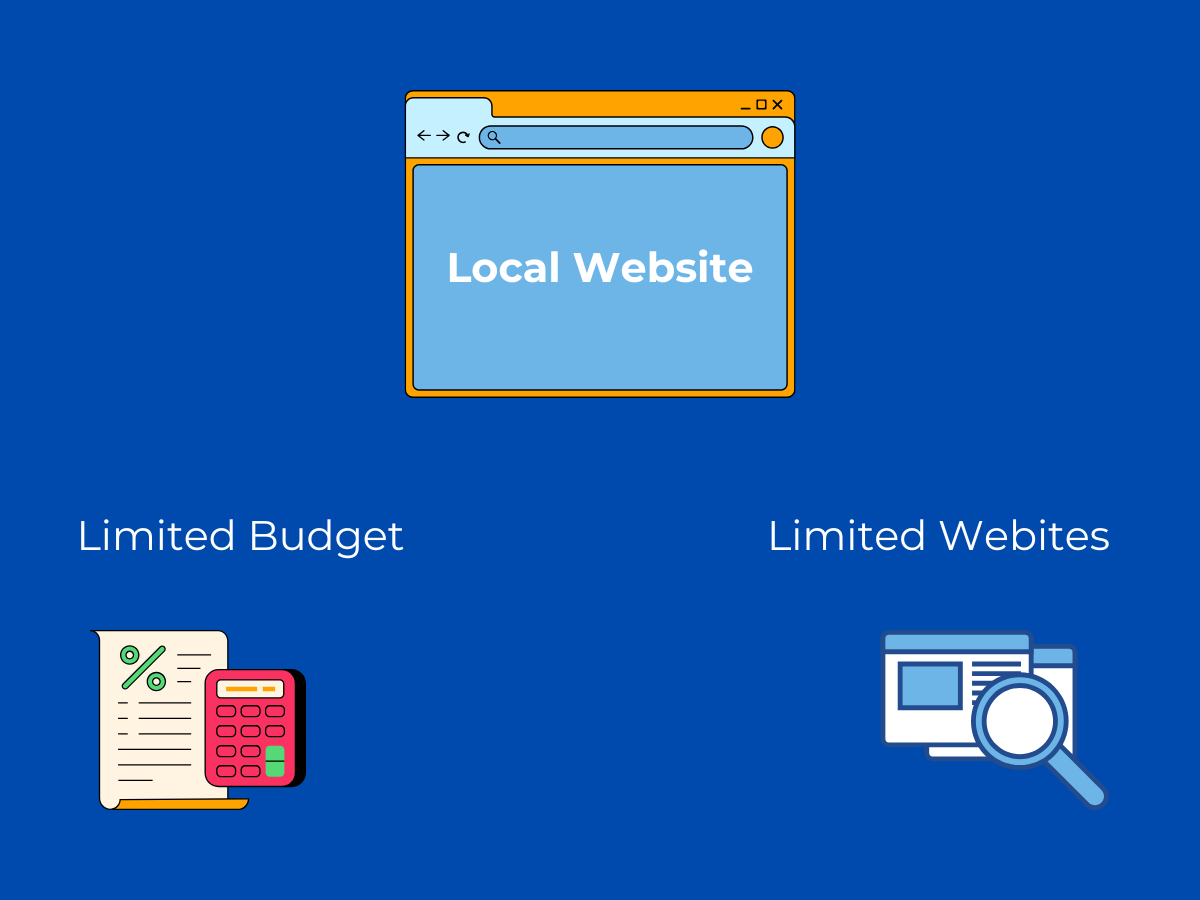
- Budget: High-quality backlinks often require an investment. While some opportunities for organic links or free collaborations exist, many valuable backlinks require financial resources, especially for new websites with low domain authority and minimal traffic. Industries such as home services, legal firms, and construction often face higher costs for quality backlinks.
- Limited Availability of Local Websites: In smaller regions or niche industries, the number of authoritative local websites might be limited. In such cases, relevancy often outweighs metrics like domain rating (DR) or traffic. However, spammy websites should still be avoided.
Link Building Strategies for Local SEO
1. Competitor Backlink Campaign
One of the most efficient ways to build local backlinks is by analyzing your competitors’ backlink profiles. Tools like Ahrefs or Semrush can help you identify where your competitors are getting their backlinks from.
- Filter results by quality metrics and relevance.
- Create a list of potential websites.
- Reach out with tailored pitches for guest posts or link placements.
Link-Building WORKS.
0 to 27,000 monthly organic traffic for key pages.
Here’s our STEP-BY-STEP process for building backlinks for our clients:
(Grab a coffee, this’ll be a long one)
1. Decide on key pages to build backlinks to.
We usually find blogs ranking #4–#20 on page… pic.twitter.com/bpliLnsK8C
— Nick Zviadadze 🇺🇦 (@Nick_zv_) January 29, 2024
This strategy ensures you’re targeting websites that are already proven to be relevant and open to collaboration.
2. Resource Page Campaign
Resource pages are often overlooked but highly effective for earning authoritative backlinks. The strategy involves:
- Creating an informative, well-researched resource (e.g., “How to Prepare a Garden for Hurricane Season in Florida”).
- Identifying relevant websites with resource pages, such as government websites, local blogs, or community organizations.
- Reaching out to these sites to suggest including your resource as a valuable addition.
This approach can earn you backlinks from highly authoritative domains. However, it requires significant effort in creating valuable content and personalized outreach.
3. Guest Posting or Link Placement
Guest posting remains a reliable method for building backlinks. Tools like Ahrefs Content Explorer can help identify relevant websites open to guest contributions:
- Search for content containing your target keyword.
- Filter results based on domain metrics.
- Reach out to pitch a guest post or propose a link placement.
While guest posting often involves paid opportunities, it allows you to control anchor text and target specific keywords effectively.
Climb up the SERPs and boost your SEO with guest posting!🚀 Take a look at our recent blog that covers the top benefits of guest posting and more! https://t.co/nhKcfENiK6 pic.twitter.com/8bCSGqMHXX
— Zero Gravity Marketing (@ZeroGrvtyMrktng) February 3, 2022
4. Press Releases for Local News Outlets
Press releases remain an effective tool for building backlinks, increasing brand visibility, and attracting local attention. By distributing press releases to local news outlets, you can:
- Announce Important Updates: Share news about product launches, community involvement, events, or significant milestones.
- Earn Credible Backlinks: Local news websites often have high domain authority, making backlinks from these sources valuable.
- Enhance Local Reputation: Being featured in local media boosts your business’s credibility and fosters trust among local customers.
If you choose this strategy ensure your press release is newsworthy and relevant to the local audience. Include targeted local keywords naturally within the content. Distribute press releases to reputable local media outlets, community websites, and industry publications. By leveraging press releases strategically, businesses can gain both SEO benefits and increased local brand recognition.
Here’s a tip that can seriously boost your Google Business Profile that nobody else is talking about👀:
🎥Create a corporate YouTube video & embed it on your homepage.
Add your NAP to the title. 💥
Distribute it via press releases & video-sharing sites for max exposure.
— Bodhi- Local SEO (@irentdumpsters) September 19, 2024
Technical SEO for Local Businesses
We’ve already covered key on-site and off-site SEO strategies, and now it’s time to address the technical side. While the core principles of technical SEO remain consistent for both local and national businesses, there are specific elements—like Schema markup, location pages, and technical audits—that play a more important role in local SEO.
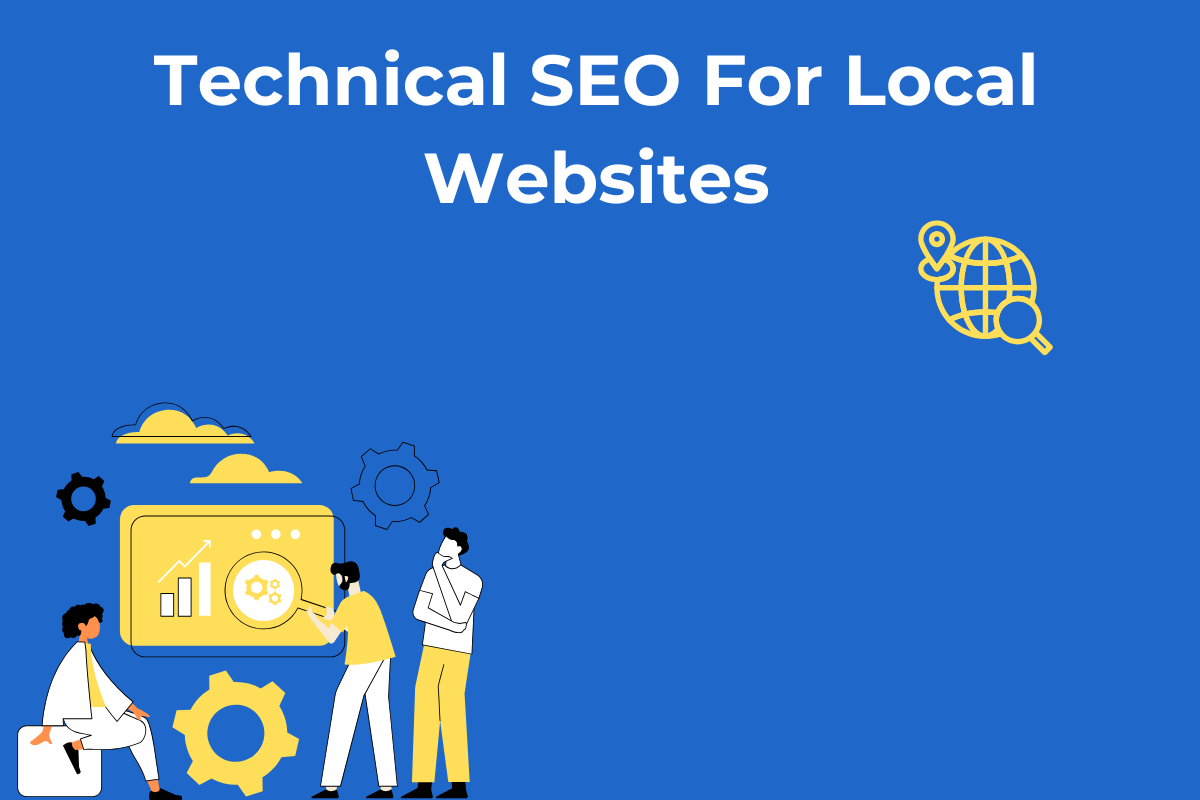
- Schema Markup: This is a form of microdata added to a website’s code that helps search engines better understand and display key information about a business.
For local businesses, implementing Local Business Schema allows you to include critical details like your business address, service areas, and working hours. This information can directly impact your rankings in local search results. However, it’s essential to ensure consistency across your Schema markup, Google Business Profile, website, and local citations to avoid conflicting information.
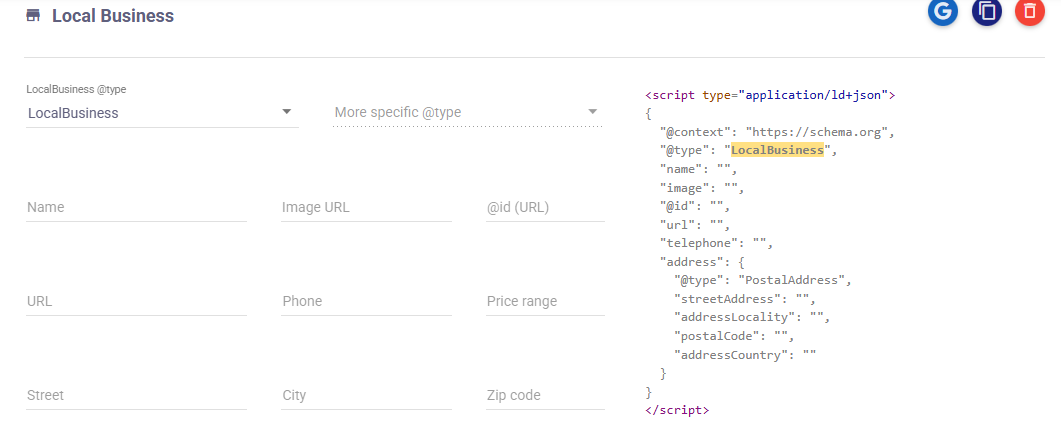
For national businesses you would prefer Organization Schema instead of Local Business Schema, as their services or products are not restricted to a specific location.
- Location Pages: Local businesses often create dedicated location pages to target multiple service areas. For example, if your company sells and installs artificial turf in Dallas, Las Vegas, and San Bernardino, you would create separate pages optimized for each city.
This ensures that when users search for “artificial turf in Dallas” or “artificial turf in Las Vegas,” they find the most relevant page.
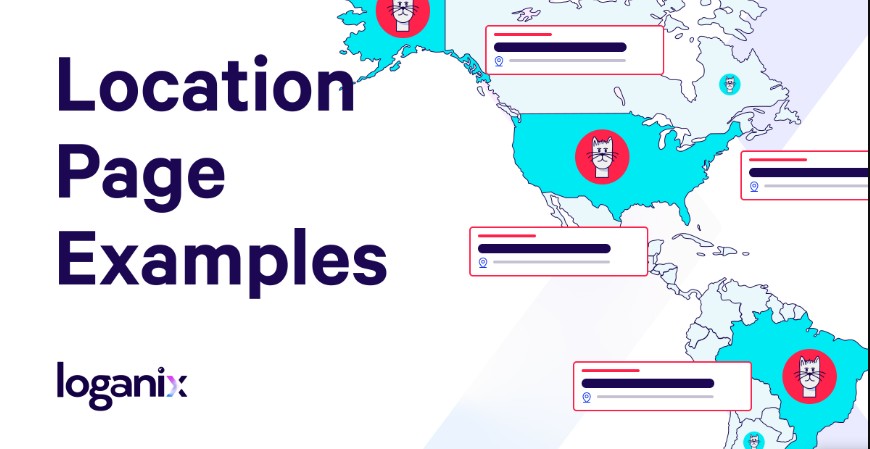
When creating location pages, keep these best practices in mind:
- Avoid duplicate content across location pages.
- Use local keywords strategically to prevent keyword cannibalization.
- Implement canonical tags if some content overlaps.
- Regularly perform technical audits to identify and resolve SEO issues.
Canonical Tags for Local SEO: When managing multiple location pages or similar service pages targeting different areas, canonical tags help prevent duplicate content issues. A canonical tag (rel=”canonical”) tells search engines which version of a page is the primary one, ensuring that link equity isn’t split across similar URLs.

Use canonicals carefully, VERY carefully . Note, if pages have unique, valuable content tailored to each location, they should be indexed separately. However, if multiple pages are nearly identical, setting a canonical URL consolidates ranking signals and prevents dilution. Proper canonicalization ensures search engines focus on the most relevant page without penalizing for duplicate content.
- URL Structure & Breadcrumbs: Using a clean and descriptive URL structure is essential for local SEO, as it helps both users and search engines understand the hierarchy of your site.
For location-based businesses, URLs should follow a logical format, such as /locations/city-name/ or /services/city-name/, ensuring they are short, keyword-rich, and easy to read. Avoid unnecessary parameters or numbers that can confuse search engines.

Additionally, implementing breadcrumbs improves site navigation, enhances user experience, and strengthens internal linking. Breadcrumbs provide a clear path back to previous sections of the website, helping search engines understand site structure while also boosting rankings by improving crawlability.
The Bottom Line
Local SEO is a powerful strategy that helps businesses connect with customers in specific geographic areas. Unlike national SEO, which targets a broader audience, local SEO focuses on optimizing for location-based searches, improving visibility in local search results, and driving targeted traffic.
By leveraging local keywords, optimizing Google Business Profile, building high-quality citations, and implementing technical SEO best practices, businesses can enhance their online presence and attract more local customers. As search trends continue to evolve, staying ahead with a well-rounded local SEO strategy is essential for sustained growth, increased conversions, and long-term success in competitive local markets.